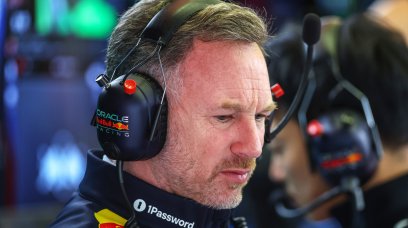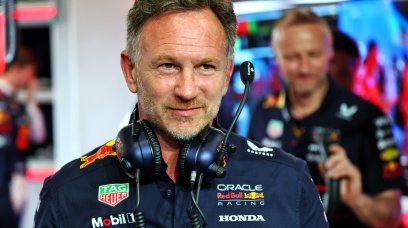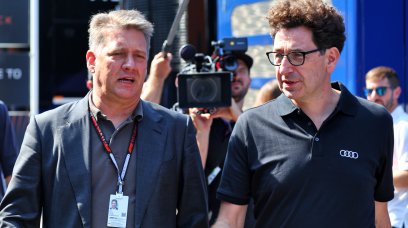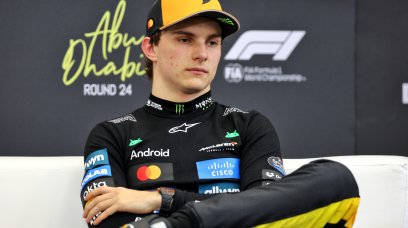McLaren roared back into life with a stunning performance at the British Grand Prix that looks set to thrust them into the battle with F1's established top four. In Austria last time out, McLaren had introduced a large package of modifications, focused on the sidepods, which was completed at Silverstone with a new front wing, improving the outwash function with the decidedly arched profile of the flaps but the performance at Silverstone was unpredictable. Indeed, throughout the weekend, it became clear that the new aerodynamic concept McLaren is following - characterised by hollowed-out sidepods at the top and a wide lower channel that is reminiscent of the Aston Martin AMR23 - has not only increased the downforce produced by the underbody of the car thanks to different profiling of the Venturi channels and airflow diverters but also made a positive contribution to its dynamic behaviour. To be truthful, after the race, where Norris finished second behind Verstappen - he tried to extinguish the enthusiasm around the level of competitiveness the package had achieved. He admitted his surprise about the car's performance but put it down to the characteristics of Silverstone rather than a substantial step forward. The data, however, points to a team that has progressively broken free of a negative technical cycle, where it was not actually clear which direction to follow at both the conceptual and development level. To tell the truth, after the race, Norris tried to extinguish the enthusiasm regarding a competitiveness he had definitively achieved, admitting that he was surprised by the car's performance and considering this largely a consequence linked to the characteristics of the track rather than a substantial step forward. The objective data, however, speaks of a team that has progressively come out of a negative technical cycle, or rather, where it was not actually clear which direction to follow at a conceptual and development level.
Stella's quiet revolution
Substantial credit for the new technical orientation, much clearer, with well-established objectives in the short, medium and long term, goes to Team Principal Andrea Stella. The Italian engineer, who has been at Woking since the arrival of Fernando Alonso in 2015, has climbed through the hierarchy, allowing him to have a very clear idea of the technical structure - and most importantly, its strengths and weaknesses where it was necessary to intervene, starting with crucial technical tools, such as the wind-tunnel. The new one being built at the factory started its work after calibrating the measuring instruments at the beginning of the season, with the developments brought in recent races the first resulting from the upgraded tunnel - with new CFD and simulation facilities also available. Therefore, McLaren - thanks to a progressive renewal of its technical resources over time (until last year, it did not have state of the art facilities) - has allowed the engineers to implement new concepts, but above all, extract the maximum potential from the current one. The MCL60 remains a 'problematic' car in terms of the predictability of reactions when cornering and remains excessively sensitive to different track layouts and asphalt grip. But the logical sequence of upgrades allowed, at least at Silverstone, the team to cancel the negative effects of these intrinsic characteristics of the original project. There is still room for improvement on the vehicle dynamics, with the adoption of front pull-rod suspension and the benefit of the anti-dive prerogative not being interpreted in as an extreme way as on the Red Bull or Aston Martin. The evolution of the MCL60 will continue for a few more races, until the team arrive at a basis (broadly speaking) for the 2024 car. There are still many steps to be taken, and not all will follow a linear trend, but it seems clear that Stella has a clear vision for his team: to make them return in the medium term to play a leading role at the front of the field, as is expected by a team bearing the McLaren name.
Comparison of early season and Silverstone versions
Comparing side-on views of the car, highlights the areas of intervention on the MCL60 McLaren have focused on. It is clear that modifications of the floor at the level of the lower air-flow diverters and of the outermost bargeboards have more vertical extension. The sidepods on the other hand are characterised by a raised lower profile to increase the lower channel between the sidepod itself and the floor. The upper profile of the sidepods are also different, more in line with the sloping shape of the Aston Martin (below) - with the MCL60 also inheriting the upper sculpted channels along the entire length of the sidepod. This has the benefit of increasing the pressure of the airflow towards the rear of the car.
Subtle floor changes
The large vertical slits have disappeared, and in their places, gills have been introduced at the base of the engine hood. Under the floor are also 'pockets', with their function being the management of porpoising. The cars driven by both Norris and Oscar Piastri in Azerbaijan sported the first evolution of the floor, both of the lateral edge and angle of the inlet section of the lower airflow diverters. In this case, the rim was characterised by perpendicular blowing that separated the front section from that in front of the rear wheels. With the developments, the blowing that characterised the previous version of the floor has been eliminated, in favour of a single stream, interrupted only by the presence of a horizontal vortex generator in front of the rear wheels.
Most read








